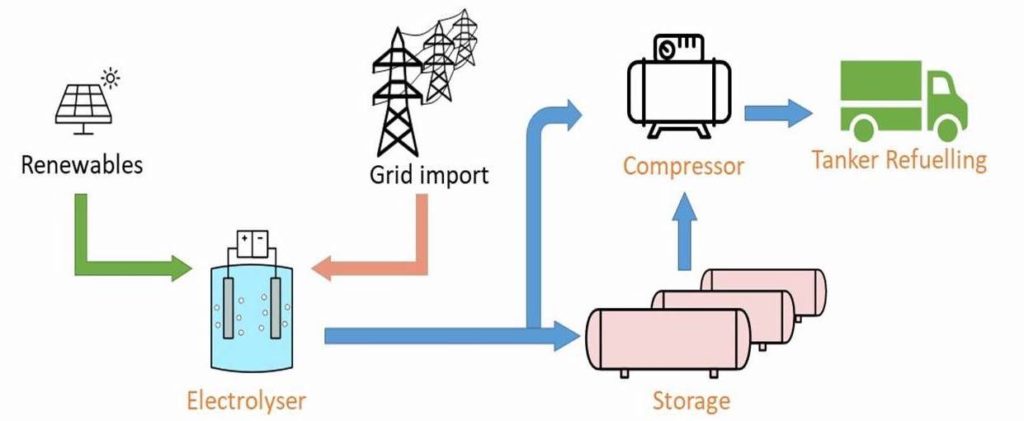
Project Summary
The Hub funded, procured and managed a feasibility study showing that, with the right grant support, competitively priced green hydrogen can be produced at the Science Museum Group’s Science and Innovation Park at scale for use in the Swindon area, making a significant contribution to the delivery of the region’s net zero carbon ambitions.
Working in partnership with the Science Museum Group, Swindon & Wiltshire Local Enterprise Partnership (LEP) and consultants Kiwa and Pannell Hayes, the Hub’s report findings will be of interest in developing the hydrogen economy across the South West and nationally.
Background
The Swindon and Wiltshire LEP had been working for some time with Science Museum Group’s Science and Innovation Park based at the former Wroughton airfield site to help it explore low carbon options.
Green hydrogen production is one of the LEP’s key industrial strategy priorities for the area and the Science Museum is keen to move to low carbon energy sources. The site also has plenty of space available for siting hydrogen production facilities and additional new renewable energy generation projects to power the production of green hydrogen.
Our Role
The Hub was able to provide the funding and procurement expertise in order to tender, appoint and project management specialist consultants to deliver the feasibility study.
Following the delivery of the report, the Hub was able to assist the Science Museum to engage with several commercial hydrogen project developers who were keen to develop a project at the site. The Museum is now in discussions with some of these developers.
Results
This study shows that it is feasible to produce competitively priced hydrogen at scale for use in the Swindon area which can make a significant contribution to the delivery of the region’s net zero carbon ambitions. Hydrogen supplying transport demands was found to be the optimal use of the hydrogen from the site, with depot refuelling of heavy vehicles the key market for the hydrogen produced.
Findings include:
- Target markets that are otherwise hard to decarbonise (such as HGVs and buses)
- A need to co-locate energy and transport infrastructure, keeping renewable electricity fuelled green hydrogen production in close proximity to consumers
- Wind and solar generation, combined on site, can provide the reliable energy needed for green hydrogen production
Location
The Science and Innovation Park is a 545-acre site 5-miles south of Swindon and Junction 16 of the M4. It comprises of large hangars and buildings supporting the collection of the Science Museum Group, and is currently planning to extend its use for technology and engineering research, automotive testing, and renewable energy generation alongside collections storage. The renewable energy generation on-site is substantial, 50MW of solar is already installed.
There is currently no hydrogen production at the site.
Technology
The study suggests that a Proton Exchange Membrane (PEM) electrolyser is used to produce the hydrogen, with it being powered by new onsite solar farm and possibly wind turbines too.
A PEM electrolyser has been chosen as the main technology for hydrogen production in this study due to its ability to produce the quality of hydrogen required, to deal with variable input and parasitic loads. It is also the one with the best commercial availability.
Financing and Ownership
Third party commercial finance would be required to enable the project to proceed due to the risks involved with supplying fuel to a still nascent H2 fuel market.
Benefits
Local economic benefits are anticipated. Hydrogen production will also allow local bus and haulage companies to switch to a clean, non-fossil fuel source which may be more appropriate for their specific needs than battery EVs.
Key Facts
| Client | S&W LEP |
| Strategic priority | Hydrogen technology innovation and deployment |
| Energy generation/saving | 14.4 GWh/yr |
| Timeline | To be confirmed |
| Carbon saving | c.5,000 tCO2e/yr |
| Project value | £7.6m |
| Project website | Read the full report |


